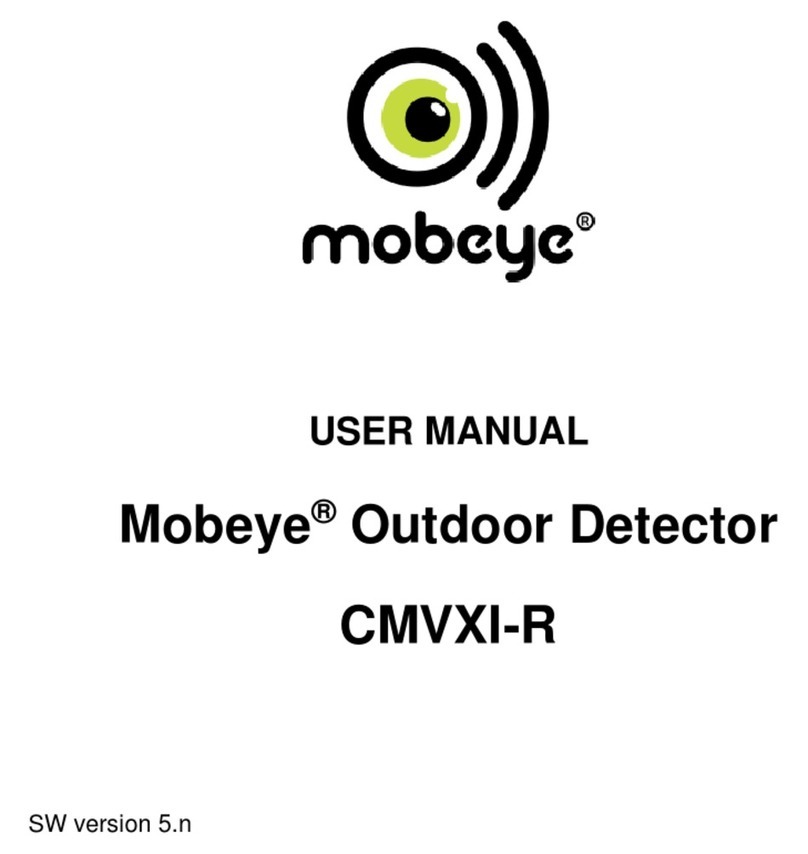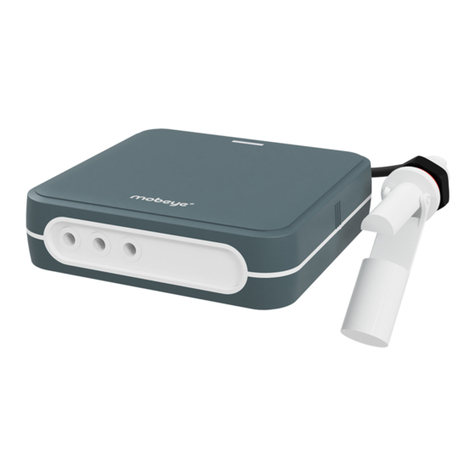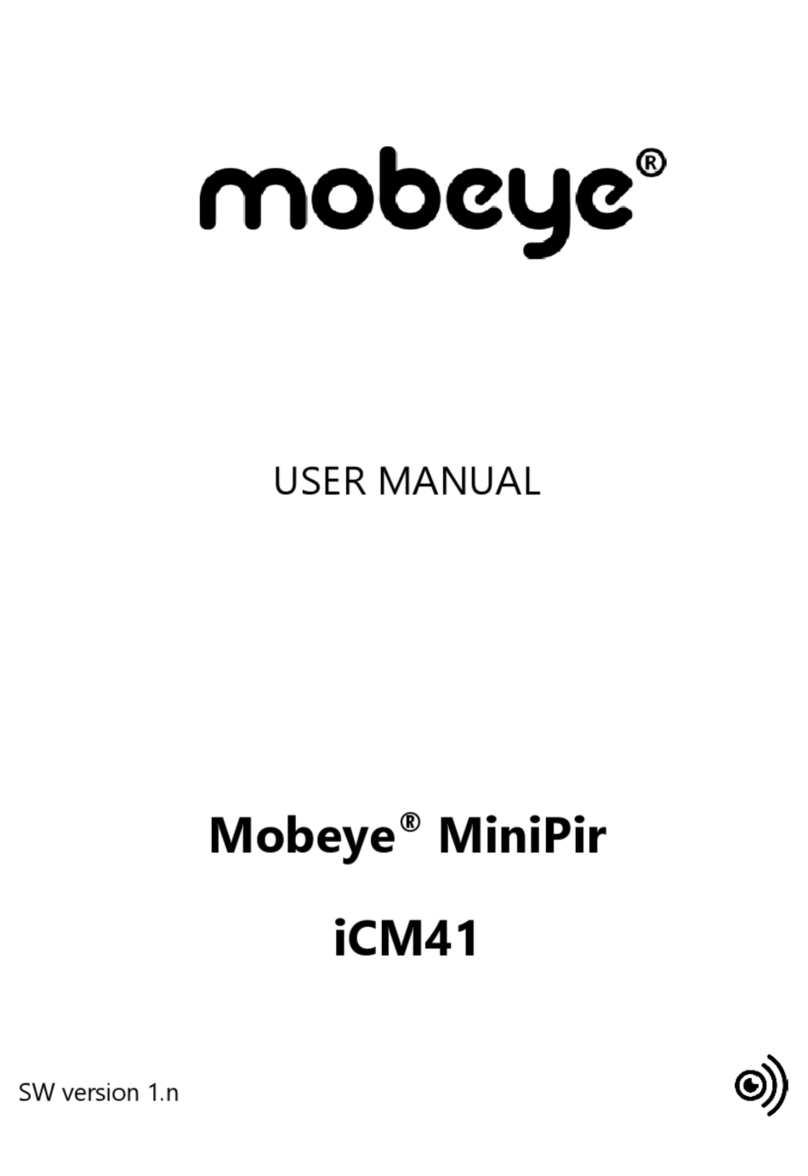Attention!
This user manual contains important guidelines for the installation and usage of the
Mobeye® device as described in this manual. Please read these thoroughly before you
start using the Mobeye® device.
In the case of damage caused by disregarding the guidelines and the instructions for use,
no liability is accepted and the warranty becomes void. The user must regularly check the
proper functioning of the Mobeye®device. The manufacturer cannot be held liable for
(direct and indirect) damage as a result of incorrect operation or incorrect functioning of
the device, software, internet or telecom connection. The manufacturer is in no way liable
for the loss of personal passwords or codes.
Safety guidelines
• The permitted ambient temperature during operation may not be exceeded (not
lower than 0 °C and not higher than 40 °C).
• The device is intended for use in dry and clean places with a residential function.
• Protect the device from moisture, heat and water splashing.
• The guidelines for the battery usage must be regarded.
• Do not expose the device to strong vibrations.
• Do not let it fall from height.
• Do not use in an environment where any inflammable gases, vapors or dust are
present or could be present.
• Repair of the device may only be carried out by people, trained for Mobeye®repair.
• If the device must be repaired, only original replacement components may be used.
Use in accordance with the regulations
The purpose of this device in accordance with the regulations is sending messages and
making telephone calls after an alarm situation. Other uses are not permitted and may
invalidate the warranty.
Battery recycling
This product contains recyclable components. When disposing of this product, please take
it to a waste collection point for disposal or to your sales point. Bring empty batteries to a
recycling centre or collection point.

































